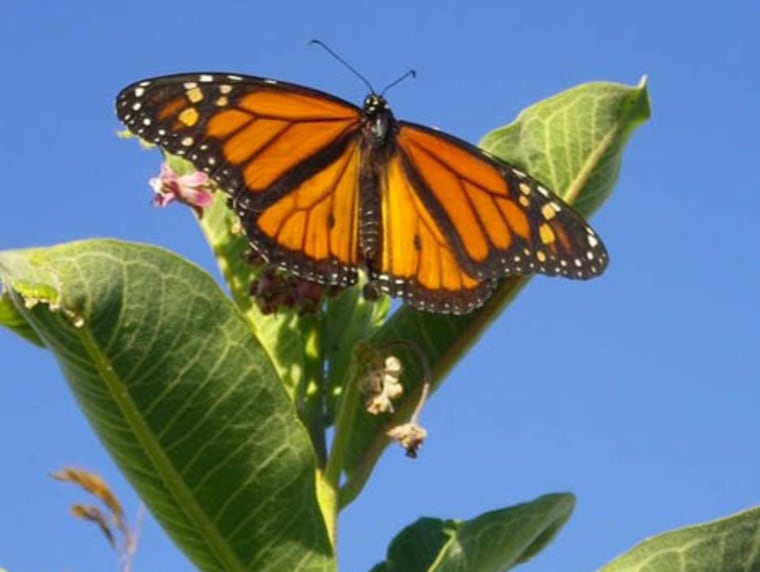The migration routes of the iconic monarch butterfly across the North American continent have been mapped in unprecedented detail. New research shows that it may take as many as five generations for monarchs to make it north out of Mexico, venturing as far as southern Canada, before returning and flying back south of the border for the winter.
Researchers captured monarchs from across 17 states and two Canadian provinces, before analyzing carbon and hydrogen isotopes in their wings to find out where the insects came from, said Tyler Flockhart, a biologist at the University of Guelph in Ontario.
The elements carbon and hydrogen both have different isotopes, or variants, present in all living things, and the exact mix of isotopes varies by region; for example, the mixture found in central Illinois is different from that found in Texas. By analyzing the mixture of these isotopes in the butterflies they were able to find out where each was from and make a multigenerational map of the monarch's migration, Flockhart told LiveScience.
Every fall, monarchs in North America begin their long journey back to Mexico for the winter. Then, in March, they start breeding, and fly north to lay eggs in Texas or elsewhere in the South, Flockhart said. Successive generations move north, before reversing their course in the fall. On average, the journey spans four generations, although it can take as many as five, Flockhart said. [Images: Monarchs' Butterfly Forest in Mexico]
The study, published this month in the journal Proceedings of the Royal Society B, shows for the first time that many, if not most, monarchs seen in the Midwest and Northeast throughout the summer come from areas other than Mexico, where they overwinter. That suggests breeding grounds in Texas and elsewhere in the South are important for the conservation of the monarchs, Flockhart told LiveScience.

The research also shows how important habitat in the Midwest Corn Belt is for the monarch; this is the predominant region where the insects breed, the study found.
Monarchs are important pollinators and are beloved for their beauty. But monarch populations are in decline, so more information about where they breed is important for their conservation, Flockhart said. Last winter's annual monarch census in Mexico reported the lowest population estimate on record, suggesting numbers of the insects could be down by as much as 80 percent from average counts over the past 15 years, Flockhart said.
Factors implicated in the monarchs' decline include habitat loss, both of wintering areas in Mexico and breeding grounds in the Midwest, as well as climate change. One result of global warming is wetter winters in the monarchs' Mexican environs, which make it easier for them to freeze to death, according to the environmental group Defenders of Wildlife.
Email Douglas Main or follow him on Twitter or Google+. Follow us @livescience, Facebook or Google+. Article originally on LiveScience.
